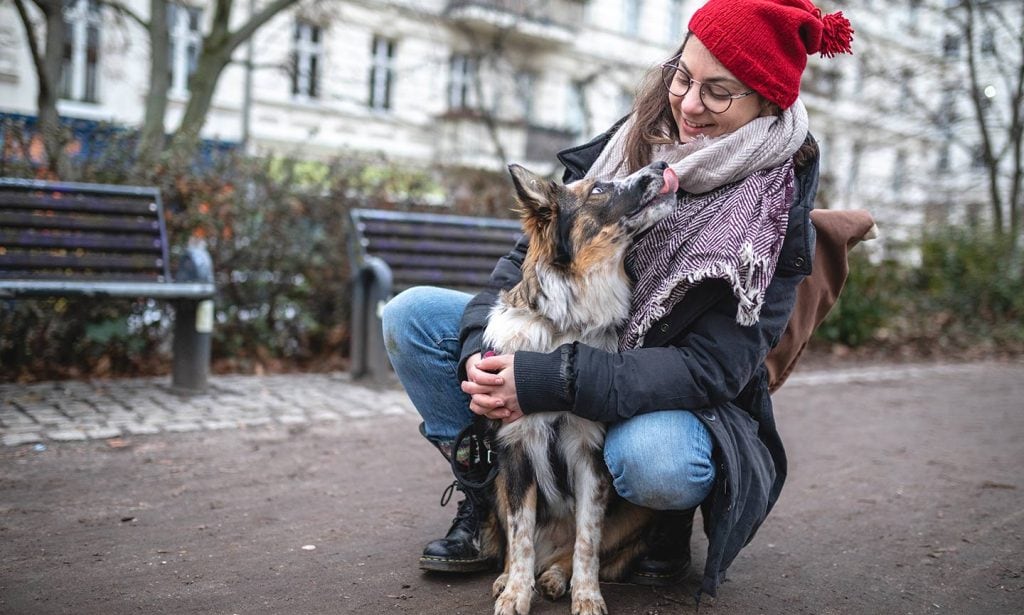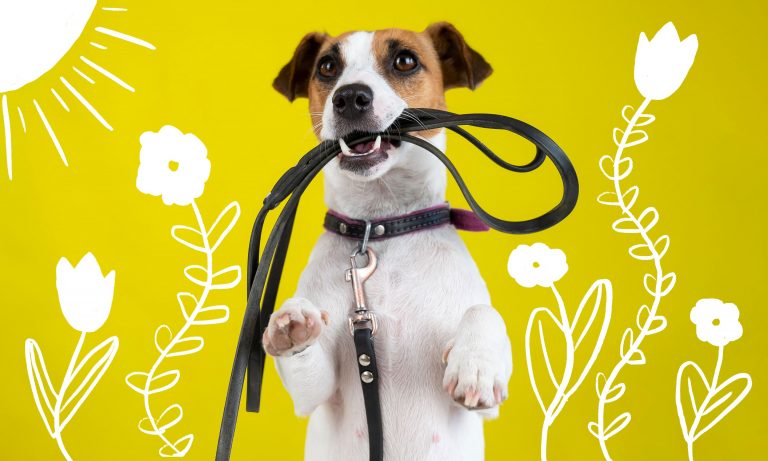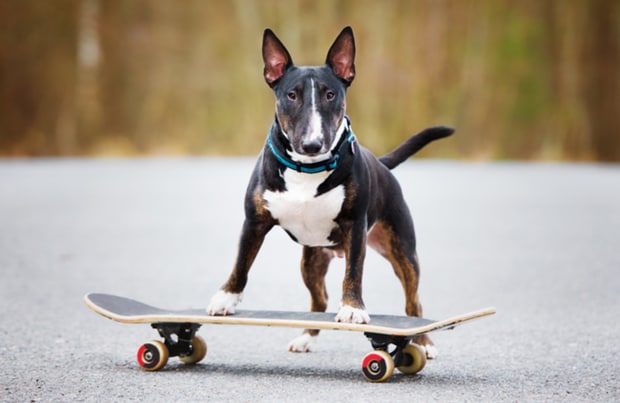For some pet parents, not even a pup’s most adorable “Pleeeaaase?!” look can excite them about walking their dog in winter. Let’s be honest: Chilly winds and icy sidewalks just plain suck. And for some dogs, going for a walk in cold weather can be miserable for them, too.
But it doesn’t have to be all that bad! With a little preparation, walking your dog in winter weather can be enjoyable (or at least bearable).
1 Walk During the Warmest Part of the Day
Before you head outside, check the weather and plan your walk around the warmest time of day.
While humans can handle some pretty cold temps, dogs should usually stay indoors if the temp dips below freezing (32 degrees Fahrenheit), says Isabella Riso, a trainer and vet tech at The HIT Living Foundation, a Los Angeles-based animal welfare organization.
But even if it’s above freezing, other factors like the wind chill, precipitation, how sunny it is and what’s on the ground (snow, ice, etc.) are important to consider, says Sarah Dougherty, DVM, a veterinarian with the Digital Health division of Kinship. Trust us: Walking your dog on a sunny 32-degree morning with a little snow on the ground is likely going to feel a lot better than on a rainy and windy 40-degree morning, even if you dress appropriately.
Dr. Dougherty suggests timing your walk for the warmest part of the day. Simply check out the hourly forecast on your phone’s weather app or an online using a site like The Weather Channel. Usually, the warmest part of the day is around mid-afternoon, specifically at 3 p.m. If your dog needs to go out earlier, limit your outdoor time to just a quick bathroom break and save the exercise for the mid-afternoon.
2 Shorten Your Walk
If you’ve determined that it’s too cold for your regular walk with your pooch, remember that short walks are better than no walks at all, says Katie Lytle, DVM, MPH, MS, veterinary channel manager at Wisdom Health in Vancouver, Washington.
But if you know your dog typically needs a little extra time to do their business, Riso has a helpful little life hack for you: “Play with and exercise your dog indoors for the approximate length of time that you would need to walk them before they do their business outside,” she says. “Once you’ve gotten your dog’s blood pumping and metabolism moving, take them outside to do their business.”
If you know your area regularly gets too cold to go outside even for a short while, consider purchasing indoor potty grass where your pet can do their business. And always ensure that they get their daily dose of exercise if you can’t go out. Consider going out more frequently, but limiting your time outside to just a few minutes. Alternatively, these 15-minute games for dogs are a great way for pups to burn off energy indoors.
3 Stay Warm With Cold-Weather Gear
The right attire can help both you and your pooch stay toasty warm while braving chilly weather.
As far as your cold-weather gear is concerned, look to down or down-alternative parkas (check out the REI Co-op 650 Down Parka 2.0), thermal socks that hold in heat (see Heat Holders Socks), fleece gloves (bonus points if they have touchscreen-compatible fingers, like Under Armour’s ColdGear Infrared Fleece Gloves, so you can’t have to take them off if your phone pings) and cute and warm headgear (try the Cozy Chunk Knit Beanie from The North Face).
Protect Your Pup with These Coats, Booties and More
Just like their humans, dogs in certain climates can benefit from an extra layer in the winter. Check out these coats, booties and more for dogs.
Winter Coats for Dogs
“In most climates, dogs won’t need clothes because they have a build-in fur coat. But if you live in extreme conditions or your dog is very small, has minimal body fat or very short hair, then I would recommend a sweater or rain jacket,” says Dr. Dougherty, adding that many dogs aren’t comfortable with the idea of wearing clothing, so it may take a little practice and positive reinforcement. (Learn more about getting your pup comfortable with clothes here.)
Here are a few of our favorite cold-weather coats for dogs:
Paw Balm & Wax for Dogs
Winter can be harsh on some dogs’ paw pads, but paw balm and wax can help protect them from any cracks or fissures, Dr. Lytle says.
Some sidewalk salt is also very irritating to dog paws, according to Denise Herman, founder and head trainer at Empire of the Dog in New York City. She suggests using a wax to help insulate and protect them from the elements—although limiting contact with irritants is really the best plan.
To pamper your pooch’s paws, consider Warren London Dog Paw Defense Wax. This wax-based cream is formulated with vitamin E to help moisturize your furry love’s paws. Project Paws Nature’s Butter Dog Paw Balm is another indulgent option: With protective and moisturizing ingredients like shea butter and coconut oil, this salve is designed to naturally remedy dry, cracked paws.
Winter Booties for Dogs
While some dogs absolutely hate wearing booties, they can be beneficial in the winter for those who can tolerate them. (Learn how to train your dog to feel comfortable in boots here.)
“If your dog is walking on a cold slab of concrete with their bare paws, they are going to get cold much faster than if they were wearing booties,” Riso says. “Booties trap heat from your dog's paws and help to keep their overall body temperature much higher than if they were to be walking without them.”
If you want to gift your dog some fancy footwear, check out Ethical Pet Fashion Lookin’ Good Fleece Boots (with 100 percent polyester fleece, they’re designed to be soft and cozy) and Kurgo Blaze Cross Dog Shoes (the rubberized sole is made with durability and paw protection in mind).
4 When in Doubt, Talk to Your Vet
Whether or not a winter walk is going to be comfortable for your dog all comes down to your specific dog. Breed, age, size and health definitely matter, notes Riso. If you have any questions about taking your dog on walks this winter, talk to your vet.
Remember, when it comes to walking your dog in winter, your and your dog’s comfort is everything. With these helpful tips and tricks, you and your pup might just learn to love winter walks!
Share:





















